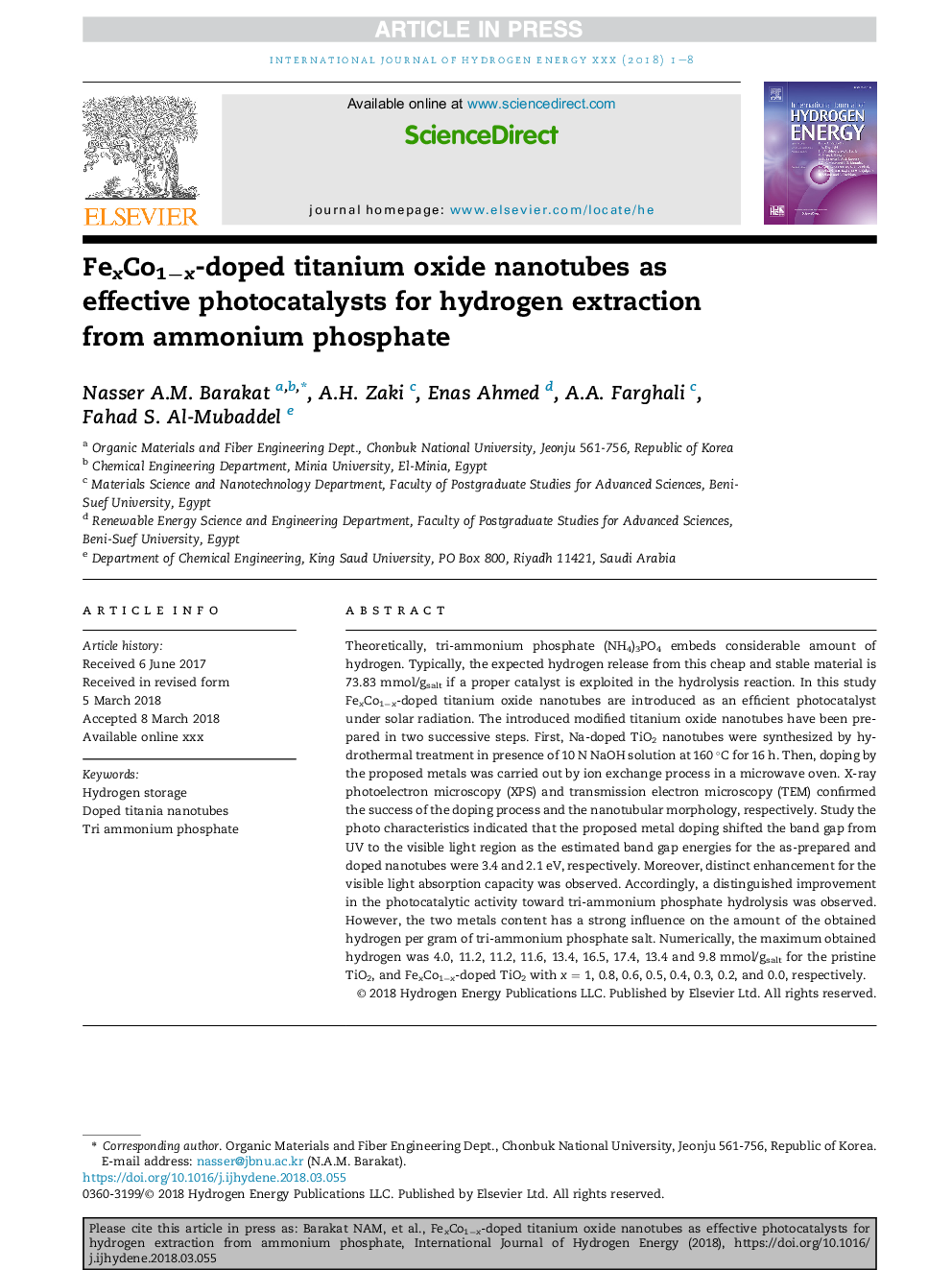| Article ID | Journal | Published Year | Pages | File Type |
|---|---|---|---|---|
| 7706418 | International Journal of Hydrogen Energy | 2018 | 8 Pages |
Abstract
Theoretically, tri-ammonium phosphate (NH4)3PO4 embeds considerable amount of hydrogen. Typically, the expected hydrogen release from this cheap and stable material is 73.83 mmol/gsalt if a proper catalyst is exploited in the hydrolysis reaction. In this study FexCo1âx-doped titanium oxide nanotubes are introduced as an efficient photocatalyst under solar radiation. The introduced modified titanium oxide nanotubes have been prepared in two successive steps. First, Na-doped TiO2 nanotubes were synthesized by hydrothermal treatment in presence of 10 N NaOH solution at 160 °C for 16 h. Then, doping by the proposed metals was carried out by ion exchange process in a microwave oven. X-ray photoelectron microscopy (XPS) and transmission electron microscopy (TEM) confirmed the success of the doping process and the nanotubular morphology, respectively. Study the photo characteristics indicated that the proposed metal doping shifted the band gap from UV to the visible light region as the estimated band gap energies for the as-prepared and doped nanotubes were 3.4 and 2.1 eV, respectively. Moreover, distinct enhancement for the visible light absorption capacity was observed. Accordingly, a distinguished improvement in the photocatalytic activity toward tri-ammonium phosphate hydrolysis was observed. However, the two metals content has a strong influence on the amount of the obtained hydrogen per gram of tri-ammonium phosphate salt. Numerically, the maximum obtained hydrogen was 4.0, 11.2, 11.2, 11.6, 13.4, 16.5, 17.4, 13.4 and 9.8 mmol/gsalt for the pristine TiO2, and FexCo1âx-doped TiO2 with x = 1, 0.8, 0.6, 0.5, 0.4, 0.3, 0.2, and 0.0, respectively.
Keywords
Related Topics
Physical Sciences and Engineering
Chemistry
Electrochemistry
Authors
Nasser A.M. Barakat, A.H. Zaki, Enas Ahmed, A.A. Farghali, Fahad S. Al-Mubaddel,
